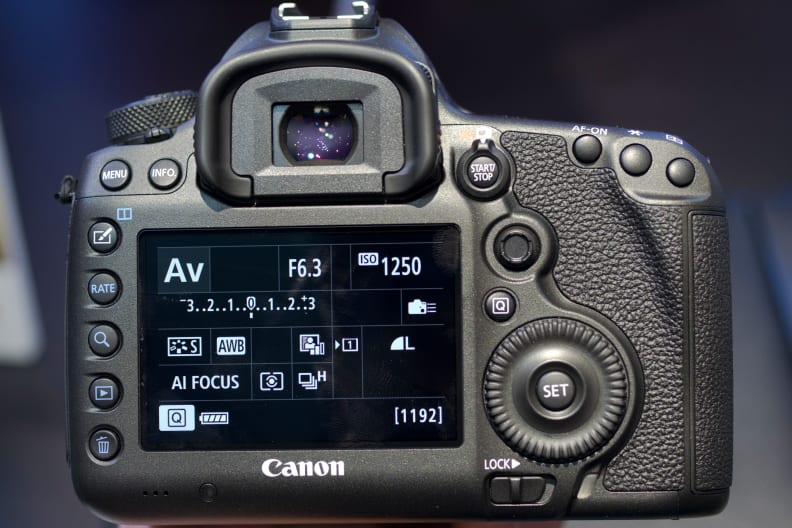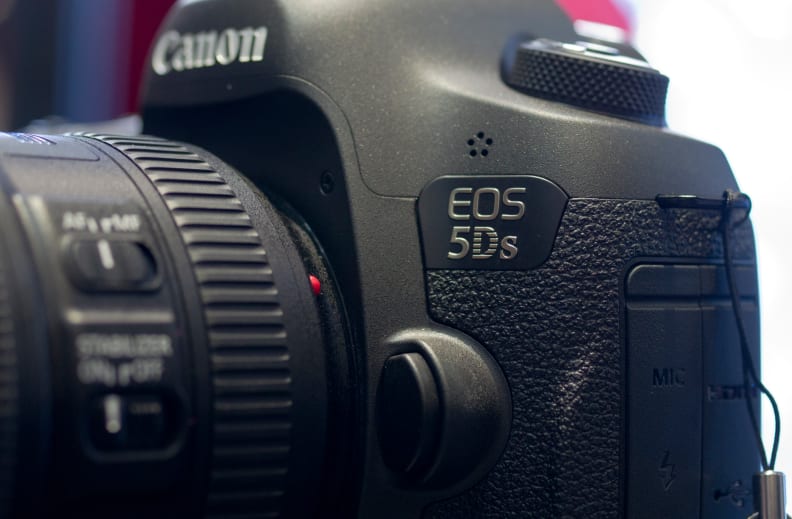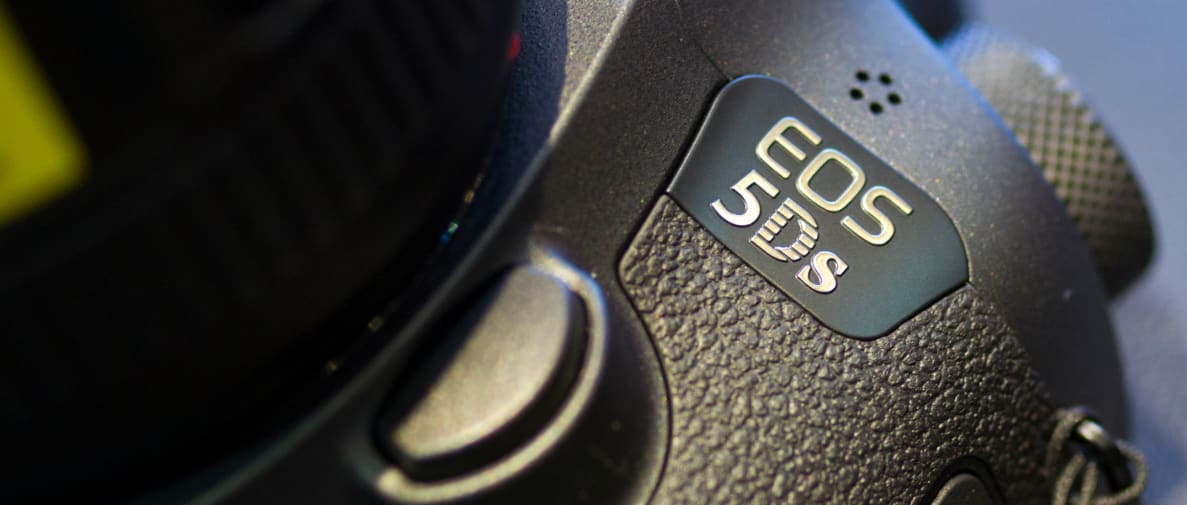Pros
Cons
While Canon isn't known to iterate on products quickly, the company is no stranger to the idea of targeting specific niches. The EOS-1D C springs to mind as a perfect example of Canon taking an existing product (the 1D X) and tailoring it to a specific need (shooting 4K video).
In the same vein, Canon is launching two crazy new DSLRs. The Canon EOS 5DS (MSRP $3,699) is a new take on the classic 5D Mark III formula, but with a monstrous 50-megapixel sensor. Spec hounds, hold your horses—those megapixels aren't for everyone.
{{brightcove '4047994367001'}}
Design & Usability
Imagine if a 5D Mark III had more than twice the pixels…
Canon has never been shy about taking an existing camera and putting new technology inside it. That's exactly what the 5DS is: a 5D Mark III with a high resolution sensor inside, and all the requisite silicon necessary to make it work properly.
That said, why reinvent the wheel? The 5D Mark III is a camera that is a known quantity. Its design is already used by many, many working professionals and enthusiasts. It's one of Canon's most successful designs, offering all the physical controls that you'd want from a serious DSLR.
{{ photo_gallery name="Design" }}
An ample grip helps you deal with the 5DS's not inconsiderable weight. Identical to the 5D Mark III in every dimension, it's a bit of a beast, though still pales in comparison to the crazy bulky 1D X—and competing medium format cameras. It sports a classic Canon interface that relies on a single vertical control dial, a big rear control wheel, and some shortcut buttons near the camera's grip.
To be clear, the body and control layout is exactly the same as what you'll find on the 5D Mark III. The same secondary display up top, the same shortcut buttons, the same 3.2-inch LCD on the back, and the same playback controls.
That means you also get the progenitor's weather-sealed ports and memory storage compartment. The lockable hatch on side of the grip has space for one Compact Flash card and one SD card, while the bottom contains the same LP-E6N that ships with the 5D Mark III.
Features
Sorry to burst your bubble, but this is not the 5D Mark IV.
While it's a 5D Mark III on the outside, once you're familiar with the guts of the 5DS, it's clear that this is a completely new camera inside. Every aspect of its internals has been fine-tuned or replaced entirely in order to get the best possible image quality from the camera's extraordinary sensor.
For instance, Canon's original mirror design was deemed too sloppy. You see, with 50 megapixels at your disposal, it's much easier to invoke accidental blurriness from factors that wouldn't negatively impact normal sensors. So, the mirror mechanism in the 5DS features new dampers, ditching the traditional spring for a small motor.
The 5D Mark III's Digic 5+ processor similarly didn't cut the mustard. With 51 million pixels to push, Canon called in the big guns. The 5DS utilizes dual Digic 6 chips in order to keep the camera feeling sprightly in spite of the camera's humongous file sizes. In our brief time with the 5DS on the show floor at CP+, we didn't feel like the camera was any faster or slower than any other full frame Canon—a good sign that in most shooting scenarios, the experience likely won't be much different than using an ordinary 5D Mark III.

Look familiar? The 5DS shares all of its exterior with the 5D Mark III.
That's not to say that this is a product without drawbacks, however. The 5D Mark III has become beloved as a great videography tool, but the 5DS probably won't. Despite the enormous sensor, the 5DS does not support 4K video—or any kind of larger-than-HD resolution. You're limited to HD that's downsampled from the camera's sensor.
Moreover, you're limited to a much smaller ISO range than we expected. The 5DS has a native ISO range of 100–6400, with a few more expanded ISO options. That represents a big difference between this camera and the 5D Mark III, and with medium format cameras boasting similar resolution. When I shot with a Pentax 645Z, for instance, I was able to get workable results at ISOs as high as 25,600, as long as long as I was willing to take a decrease in resolution.
Clearly, there's some hitch with the 5DS's custom CMOS sensor. We expect that Canon would argue that as a specialized product, it's not remotely meant to replace more flexible, lower-resolution cameras that boast wider ISO ranges.
Conclusion
Looks like a powerful tool, and a win for Canon.
The 5DS is an affirmation of Canon's imaging innovation. By transforming the 5D Mark III into a high resolution powerhouse, this is clearly a ploy to take a bite out of the medium format market. Professional photographers that are already working in the EF system can now use their great existing lenses to take on studio work or expand their professional profile, utilizing a resolution not typically available on a traditional DSLR. It's a move that's good for photographers and good for Canon, who might be able to keep the herd from flocking to medium format cameras from Hasselblad, Pentax, or PhaseOne.

The 5DS isn't a camera for everybody, but it's a promising choice for a select few.
While you won't get the depth of field boost that a bigger sensor yields, and the improved noise characteristics of a medium format sensor, architectural and landscape professionals probably won't mind in the slightest. Because, my god, the 5DS is full of pixels.
Meet the tester
Brendan is originally from California. Prior to writing for Reviewed.com, he graduated from UC Santa Cruz and did IT support and wrote for a technology blog in the mythical Silicon Valley. Brendan enjoys history, Marx Brothers films, Vietnamese food, cars, and laughing loudly.
Checking our work.
Our team is here to help you buy the best stuff and love what you own. Our writers, editors, and experts obsess over the products we cover to make sure you're confident and satisfied. Have a different opinion about something we recommend? Email us and we'll compare notes.
Shoot us an email


